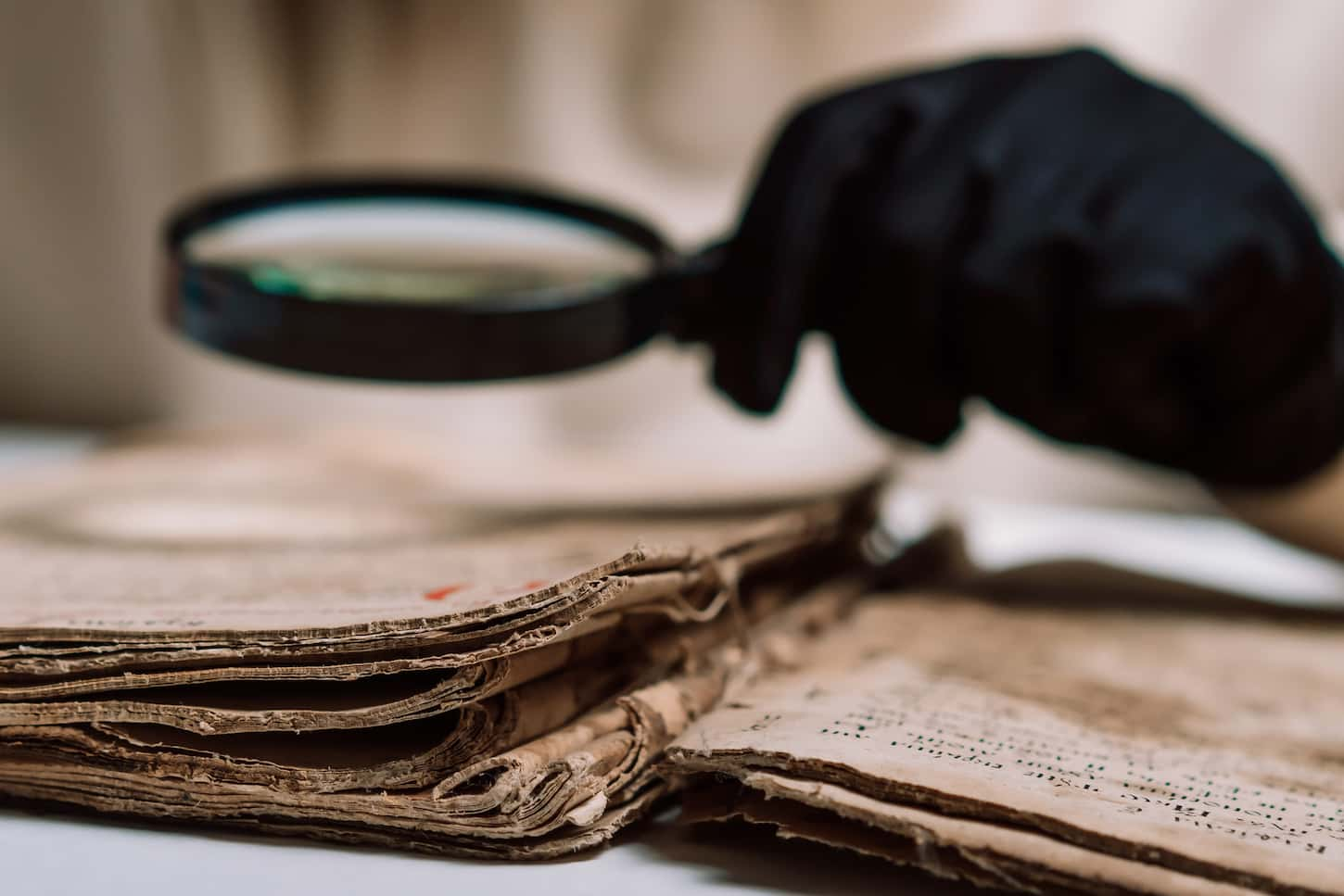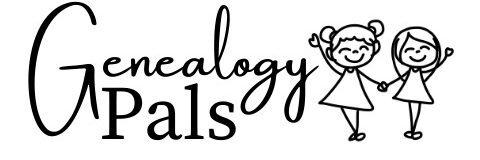While indexing isn’t one of my favorite activities, I know it’s important because it creates digital access to vital records. But how far back do ancestry and genealogy records actually go? And how far back can I expect to find genealogy records?
The earliest genealogical records are from China in 1500 B.C. European-based records go back to the 1500s for the general population, while nobility kept family records up to several centuries earlier. Compiled genealogies and oral histories take those dates back further but are less reliable.
Ready to learn about how far back it’s possible to trace your family history via primary records – or by a compiled genealogy? Keep reading to learn all about the records and how far back they date.

How Far Back Genealogy and Ancestry Records Go
How far back your genealogical and ancestral records go is going to depend on your heritage – and where your family lived at any specific point. It’s also going to depend on if you’re descended from royalty – or not.
This is because different regions of the world have different customs for keeping records – and those customs have radically changed over the centuries.
For example, keeping family records is a pretty customary thing in recent American history. But America is, compared to other countries, still quite young. So even if your family came over on the Mayflower, you’ll quickly find that you’ve got to move to another country to keep following your family lineage.
Even so, civil and church records didn’t develop in some of the more established and richly historical countries until about the same time as they did in America – unless you happened to be royalty. In those cases, the records exist for up to several centuries earlier.
So with the very strong exception of China (which started keeping records in 1500 B.C.), the general guideline for available records goes like this:
- The nobles have the earliest records.
- Church records began to be kept next.
- Civil records developed last.
Given that information, let’s take a look at when the earliest records are available by region, type, and year.
| Area | Earliest Records Available by Type and Time |
|---|---|
| United States | Colonial records exist for British colonies as early as 1608. |
| England | General Parish records begin in 1538. There are records before that, but those are mostly of wealthy landowners or royalty. |
| Scotland | For royalty, the first records date back to 1127. Church records date back to 1538. Civil registers didn’t start until 1855. |
| Ireland | The earliest church records date back to the late 1700s. |
| Denmark | Nobility records started in the early 1100s. The earliest church records date back to 1484, though the records kept are dependent on the denomination. |
| Germany | The earliest church records to date back to the 1400s, although nobility had recorded before that. |
| France | The very earliest church records start in 1334. |
| Russia | Peter the Great mandated the regular recording of vital statistics starting in 1722. |
| China | The Chinese kept jia pu records, the earliest of which date back to about 1500 B.C. |
| Japan | Compiled genealogies begin as early as 850 A.D. |
| Israel | Most civil records date back to when Israel was under British rule in the 1800s, although Jewish compiled genealogy has a further reach. |
| Egypt | Civil records began under British colonization in the 1830s. |
| Mexico | The first diocese and records in Mexico were established in 1527. |
| Brazil | Records began possibly as early as 1688. |
| Polynesian | Oral histories are common and being recorded, although church and civil records don’t start until possibly 1815. |
That’s pretty awesome to know, don’t you think? But this leads us to our next question – who can trace their family back to the earliest point?
Who Can Trace Their Ancestry Back the Farthest?
Given the fact that the Chinese have an almost 3,000-year head-start on genealogy compared to the West (it’s only a 2350-year head-start over Japan), it shouldn’t surprise us that the oldest family tree comes from China.
The oldest and longest family tree originates with the famous Chinese philosopher Confucius. Given his popularity, it’s also important to note that there may be some fudging of family history, as people wanted to prove they were related to the wisest of Chinese philosophers. But even if the size of the tree is under some suspicion, it doesn’t change the fact that it is the oldest family tree in existence.
There are some other prestigious (and old) family lineages that are also worth noting, although they do incorporate compiled genealogies. Using a compiled genealogy means that we can’t verify (or deny) their existence as there is a lack of primary sources to rely upon – we’re left to rely on those oral traditions that are our secondary or tertiary sources.
- King David’s lineage – as traced via the Lurie family tree.
- Adam and Eve’s lineage – is usually traced via King David, Abraham, or other Jewish family lines.
- Many European royal lines also tie into the Biblical lines, although there are no primary sources to either confirm or repudiate these claims.
In any case, it’s definitely cool to be able to take your family line back as far as possible. But since the paper trail is kind of limited, could we use our DNA to take us further back to see what our family was like even longer ago?
How Far Back Does a DNA Test Take Me?
Using DNA, researchers and scientists have been able to confirm a Y-Chromosome Adam and a Mitochondrial Eve – and do some deep genetic ancestry for individuals.
However, they haven’t been able to give us any specific information about who Y-Chromosome Adam and Mitochondrial Eve were in a historical sense – or even where they’d fit on a verified historical timeline as of yet.
That doesn’t mean it won’t happen – it just means it hasn’t happened yet. I’d wager that, one day, they’ll be able to give us more information. Scientists and geneticists find out more as they continue to evaluate additional DNA samples.
So if you want to find out more about your family’s more ancient history, it may be worth taking a DNA test.
For example, I took a DNA test that confirmed that I’m very white (this ginger isn’t very shocked about that) and very European. Oh, and that my ancient family members weren’t big into traveling – or at least weren’t big into marrying people from different regions.
Those results are the latest – several years ago, I was told that 1% of my DNA may have originated from Asia or Africa. However, a recent update informed me that additional samples had shown I did not actually have any heritage from those areas.
So the more samples that geneticists can analyze, the more accurate of a picture they’ll be able to develop of the ancient world – and its inhabitants.
Can You Trace Your Lineage Back to the Bible?
In order to trace your lineage back to the Bible, you really have to make a lot of assumptions that the compiled genealogies are right – and there’s not a way to verify that data.
Even so, it is possible to do if you’re willing to rely on those compiled genealogies. But for more information on this (and the next) topic, I’d suggest you read our article on tracing your family back to Biblical times and lineages.
Can You Trace Your Lineage Back to Adam?
While we go into depth in answering this question in our post on tracing your family back to the Bible, let’s at least answer it quickly here. That way, you’ve got a quick answer.
The only way to trace your lineage back to Adam is to use compiled genealogies – and they’re not seen as reliable sources of data. For more information on why that is, please read our full article on the Bible and genealogies as linked to in the paragraph above this one.
Final Thoughts
Being able to see your family’s history and lineage is awesome – it’s so cool to see how your family was affected and, in turn, affected history. But it’s even cooler to see the primary sources and proof that they were there – and not to have to rely on guessing that you’ve got things right.
So do what you can to add valid, primary sources as citations to your family tree. Do what you can – and go back as far as you can. I’m sure that one day we’ll come across another miraculous advance in genealogical research practices that help us see back even further in time.
Resources
When learning about genealogy, it’s important to learn from various reputable sources. These are the sources used in this article and our research to be more informed as genealogists.
- Aduan, John Zeus Martin, and Herm. “‘I Have My Family Tree Back to Adam and Eve’ • FamilySearch.” FamilySearch Blog, 29 Aug. 2019, familysearch.org/blog/en/family-tree-adam-eve/.
- “Brazil Church Records.” FamilySearch Wiki, familysearch.org/wiki/en/Brazil_Church_Records.
- “Can I Trace Genealogy Back to Adam and Eve?” FamilySearch Wiki, familysearch.org/wiki/en/Can_I_Trace_Genealogy_Back_to_Adam_and_Eve?#:~:text=Though each living person’s life,descendancy from Adam and Eve.
- Church Records – Irish Genealogy, irishgenealogy.ie/en/irish-records-what-is-available/church-records.
- “Denmark Church Records.” FamilySearch Wiki, familysearch.org/wiki/en/Denmark_Church_Records.
- “Denmark Nobility.” FamilySearch Wiki, familysearch.org/wiki/en/Denmark_Nobility.
- “Egypt Colonial Records.” FamilySearch Wiki, familysearch.org/wiki/en/Egypt_Colonial_Records.
- “France Church Records.” FamilySearch Wiki, familysearch.org/wiki/en/France_Church_Records.
- Gladstone, Bill, et al. “The Oldest Family in the World.” Jewish Telegraphic Agency, 26 Sept. 2017, jta.org/2004/10/24/lifestyle/the-oldest-family-in-the-world.
- “Israel Birth, Marriage, and Death Records.” FamilySearch Wiki, familysearch.org/wiki/en/Israel_Birth,_Marriage,_and_Death_Records.
- “Japan Compiled Genealogies.” FamilySearch Wiki, familysearch.org/wiki/en/Japan_Compiled_Genealogies.
- “Mexico Church Records.” FamilySearch Wiki, familysearch.org/wiki/en/Mexico_Church_Records.
- National Archives. “Medieval and Early Modern Family History.” The National Archives, The National Archives, 15 May 2020, nationalarchives.gov.uk/help-with-your-research/research-guides/medieval-early-modern-family-history/.
- “Oral Genealogies in the Pacific Islands: Religious Studies Center.” Oral Genealogies in the Pacific Islands | Religious Studies Center, rsc.byu.edu/regional-studies-latter-day-saint-church-history-pacific-isles/oral-genealogies-pacific-islands.
- Pendle, George. “Over 3,000 Years of Humans Exaggerating Their Lineage on Family Trees.” Atlas Obscura, Atlas Obscura, 16 May 2016, atlasobscura.com/articles/over-3000-years-of-humans-exaggerating-their-lineage-on-family-trees.
- Rosenstein, Neil. “The Lurie Legacy (July 2004 Edition).” Open Library, Avotaynu, 1 July 2004, openlibrary.org/books/OL9784307M/The_Lurie_Legacy.
- “Russia Compiled Genealogies.” FamilySearch Wiki, familysearch.org/wiki/en/Russia_Compiled_Genealogies.
- “Russia Church Records.” FamilySearch Wiki, familysearch.org/wiki/en/Russia_Church_Records.
- “Searching for Your German Ancestors.” How To Germany – Searching for Your German Ancestors, howtogermany.com/pages/genealogy.html.
- “United States Colonial Records.” FamilySearch Wiki, familysearch.org/wiki/en/United_States_Colonial_Records.
- West, Franklin, et al. “How to Find My Chinese Ancestors • FamilySearch.” FamilySearch Blog, 17 June 2019, familysearch.org/blog/en/chinese-family-tree-jiapu/.
- “What Records Are in the Site.” ScotlandsPeople, 21 Apr. 2020, scotlandspeople.gov.uk/what-records-are-in-the-site.
